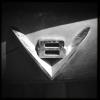When and Why were blue flags introduced?
#1

Posted 23 March 2004 - 16:36
Mark
Advertisement
#2

Posted 23 March 2004 - 18:15
Just a thought-I've not got any books handy and didn't turn up anything in Google.
-William
#3

Posted 23 March 2004 - 20:06
...and just reading the wording, I see the interesting fact that it doesn't say anything about 'lapping', so according to this even the leader could be waved at by the marshalls....
...and to forestall you who, rightly, consider the French text to be the official one - "Un concurrent vous suit de près et peut ou va vous dépasser"...
#4

Posted 23 March 2004 - 21:52
http://forums.atlasf...s=&postid=96703
In the same thread, Leif Snellman gives a Finnish interpretation from the 1950s. So it goes back well before 1969 ....
#5

Posted 23 March 2004 - 22:23
Thanks,
Mark
#6

Posted 23 March 2004 - 22:29
In those days it was mandatory to make room only insofar as motor-racing was a sport back then, and failing to move over for a faster car went against all principles of sportsmanship
#7

Posted 24 March 2004 - 00:23
Red -- course is clear
Yellow -- blocked course; stop
Green -- you are entering your last lap
White -- stop at pit on next lap for consultation
Black & white checkered -- you are finished
Black with white center -- a competitor is trying to overtake you
#8

Posted 25 March 2004 - 10:47

#9

Posted 25 March 2004 - 17:40
Flags:
White – starts race
Yellow – all cars must stop immediately
Blue (horizontal) – keep to the right side
Blue (waving) – attention, slow down
Chequered (white-black pattern) – with start number – stop your car
Flags dimension: length 70 cm, height 40 cm.
#10

Posted 25 March 2004 - 17:49
Pretty interesting, it had the very opposite meaning at all!Originally posted by Don Capps
...
Red -- course is clear
...
#11

Posted 26 March 2004 - 08:32
This would seem to confirm report of Polish racing in 60s which said RED & white chequered flag was used for the finnish. Which of course is also the insignia of the Polish Air Force.Originally posted by anjakub
Polish racing regulations from 1929 (probably on base of the AIACR rules) .
Flags:
Chequered (white-black pattern) – with start number – stop your car
#12

Posted 26 March 2004 - 11:12
#13

Posted 26 March 2004 - 17:40
Originally posted by Rob29
This would seem to confirm report of Polish racing in 60s which said RED & white chequered flag was used for the finnish.
Robert, it is not true.
Red & white chequered flag was used for the start. Black & white was (till now) the finish.
#14

Posted 27 March 2004 - 00:21
-yellow flag: for immediate stop. Placed where the drivers had to stop.
-blue flag: for slowing because of a dangerous place or entering a village. Blue flags were located 250 m before the dangerous place.
-flag with yellow and blue stripes: indicated succesive dangers.
All these flags were placed twice: one on a tree, a wall or a pole, the second being presented by a man, just under the first one.
#15

Posted 27 March 2004 - 14:03
Current
Red Flag -- Course is clear
Yellow Flag -- Blocked course; slow
Green Flag -- You are entering your last lap
White Flag -- Stop at pit on the next lap for consultation
Black and Whte Checkered Flag -- You are finished
Black Flaf with White center -- A competitor is trying to overtake you
Proposed
Green Flag -- Start or Go
Blue Flag -- Pull over, competitor is trying to pass you
Reg Flag (stationary) -- Caution - watch out for conditions ahead; get your car under control - bad conditions ahead
Red Flag (waved) -- Slow down still further
Black Flag -- Stop next lap for consultation
White Flag -- you are entering your last lap
Checkered Flag -- You are finihsed
In the final version, the red flags in the proposal were replaced by yellow flags and red was changed to Stop immediately, track blocked raced halted
#16

Posted 27 March 2004 - 15:16
I mean, the red, yellow and green lights for stop, take care and go, as well as the red and green for pedestrians meaning walk and don't walk, now of universal use.
#17

Posted 27 March 2004 - 16:45
Jesper
#18

Posted 27 March 2004 - 17:02
#19

Posted 28 March 2004 - 11:27
Jesper
Advertisement
#20

Posted 30 March 2004 - 02:51
ARTICLE 25 OVERTAKING
During the race, a car may use any portion of the Circuit.
However, when it is overtaken along a straight line by a car temporarily or consistently faster, it shall give right of way by keeping to the right of the Circuit to allow passing on the left, which is normally the only authorized way of passing on the straight.
If a driver does not appear to allow a faster following car to pass, officials will wave the BLUE FLAG as a warning that a car is overtaking him.
Passing on curves may take place on either the right or the left . . .
The Blue Flag will also be given to drivers who obstruct the left hand side of the Circuit, and to drivers who discourage attempts at passing . . .
ARTICLE 30 SIGNALS
GREEN FLAG Start
RED Complete and immediate stop
YELLOW (waved) Great danger, be prepared to stop
YELLOW (motionless) Take care, danger
BLUE (waved) Another competitor is trying to overtake you
BLUE (motionless) Another competitor is following you very closely
WHITE An ambulance or service vehicle is on the course.
. . .
ARTICLE 36 ROOM RESERVATIONS
Room reservations shall be the responsibility of the individual.
--
Frank S
















